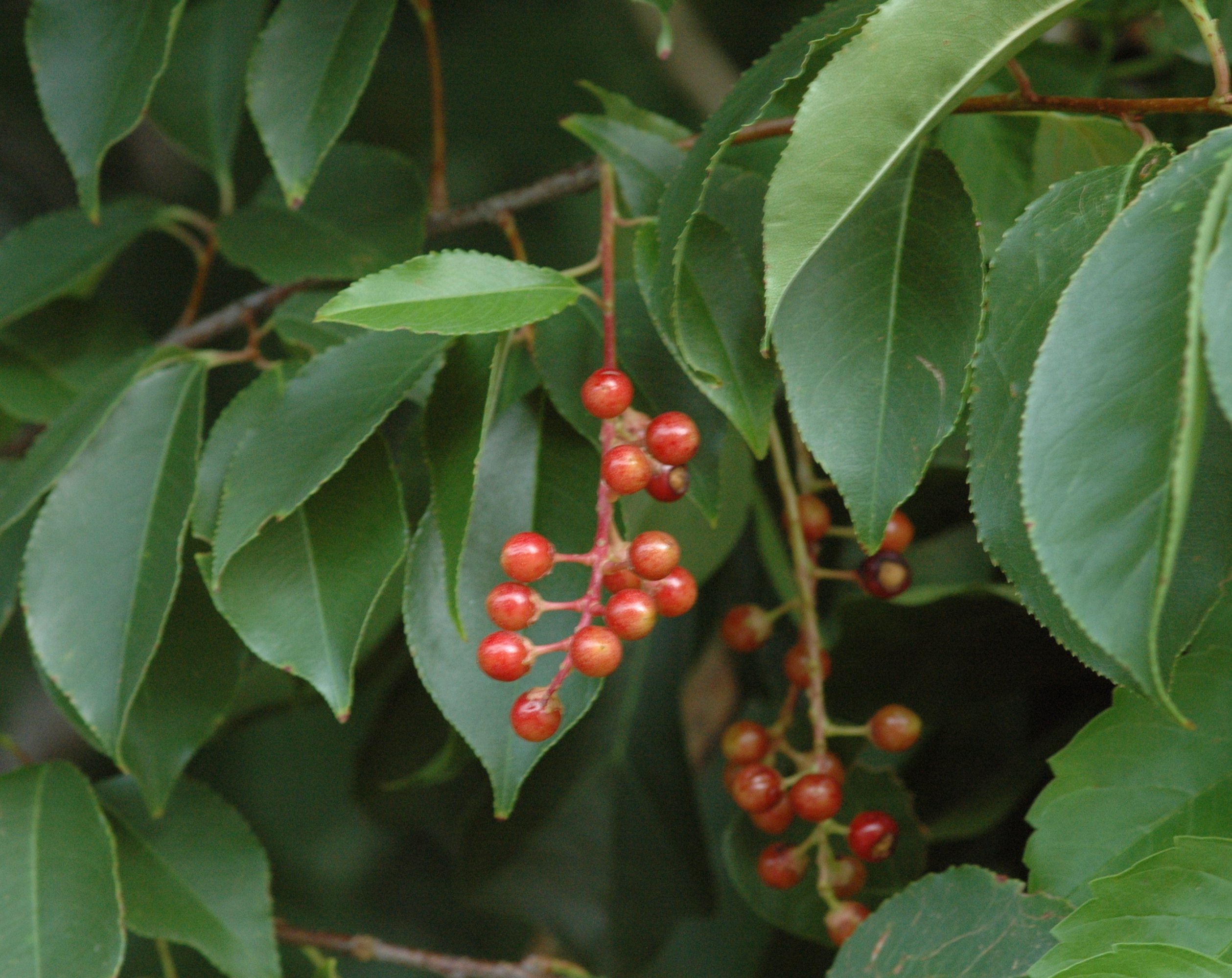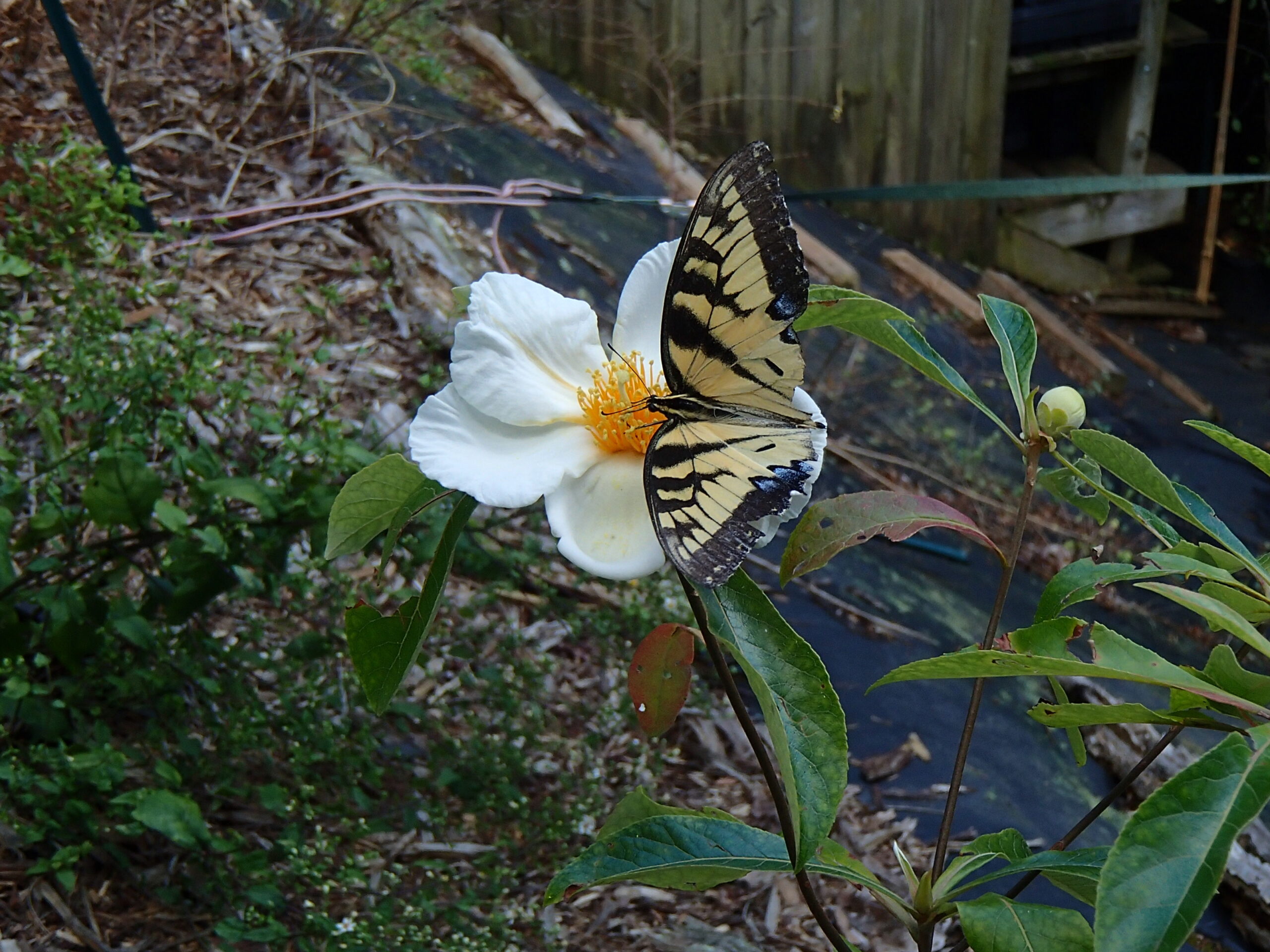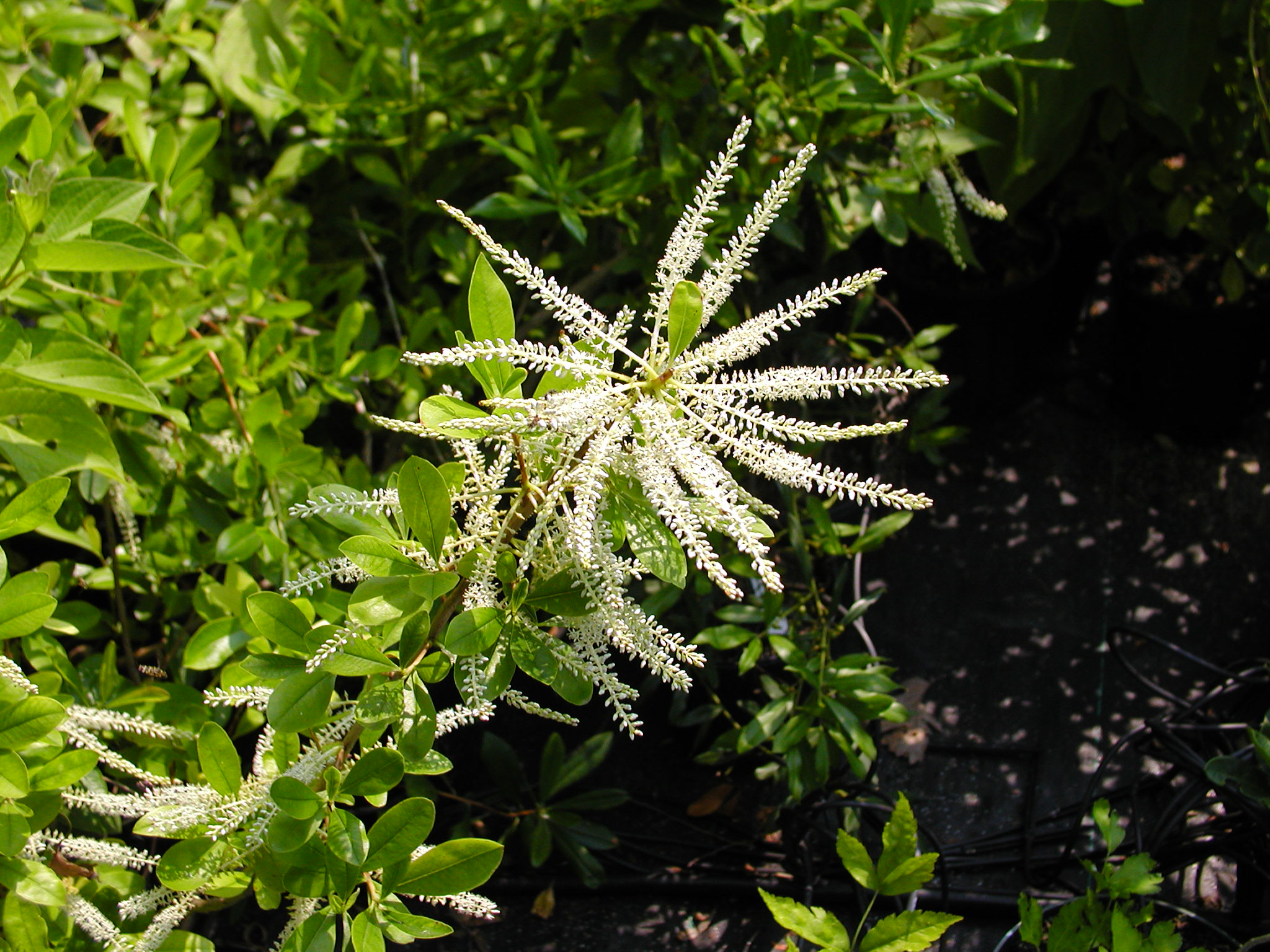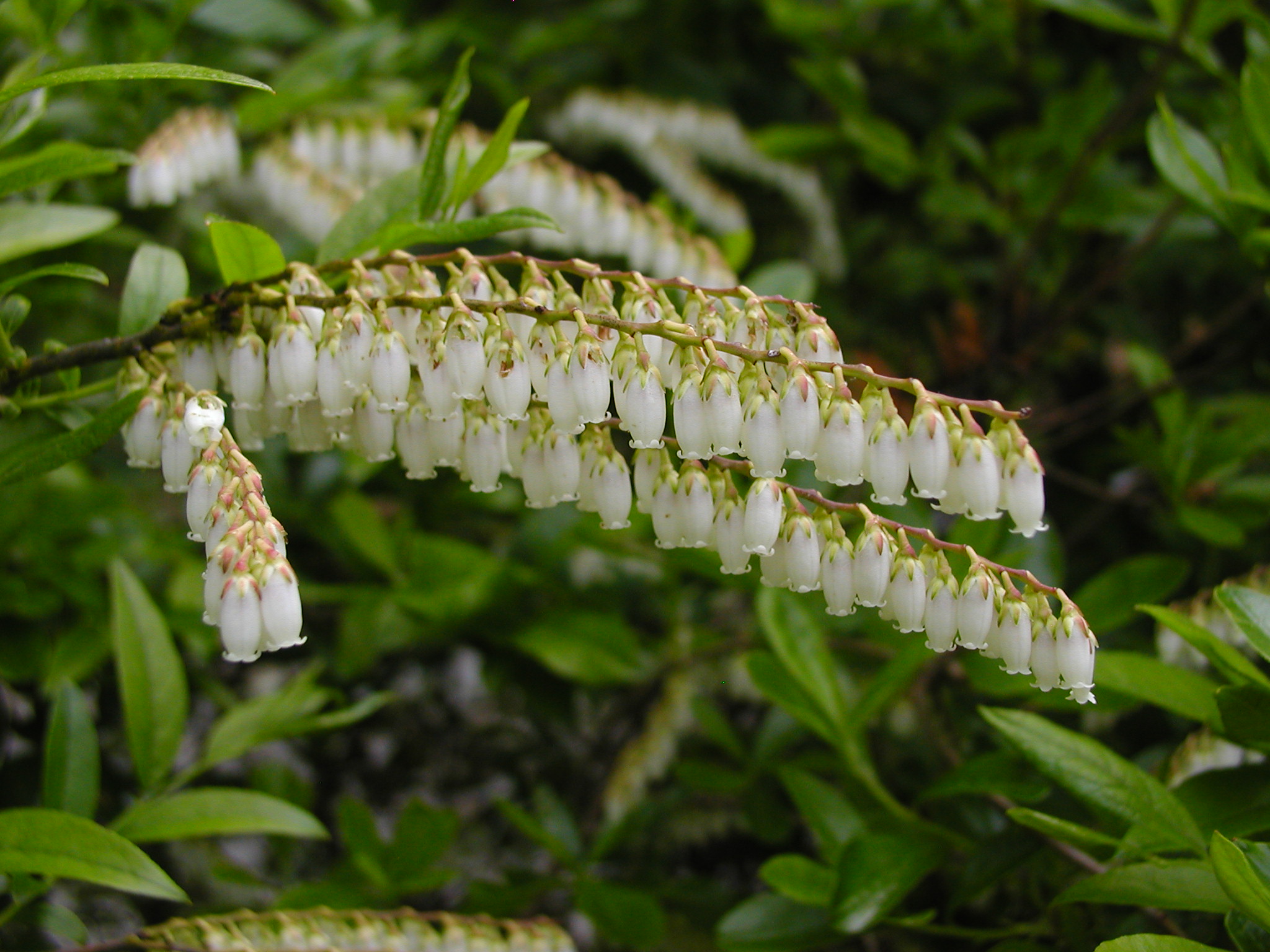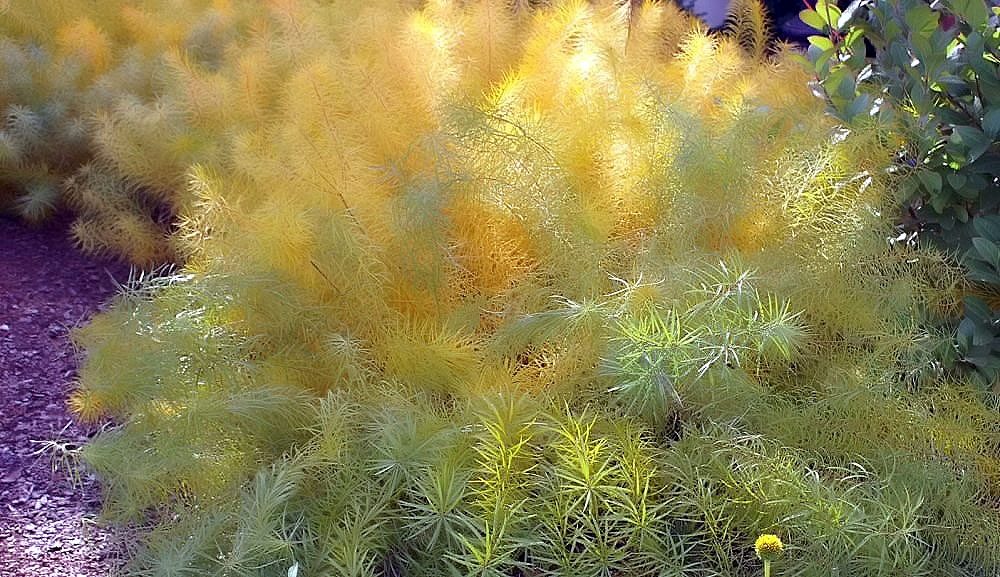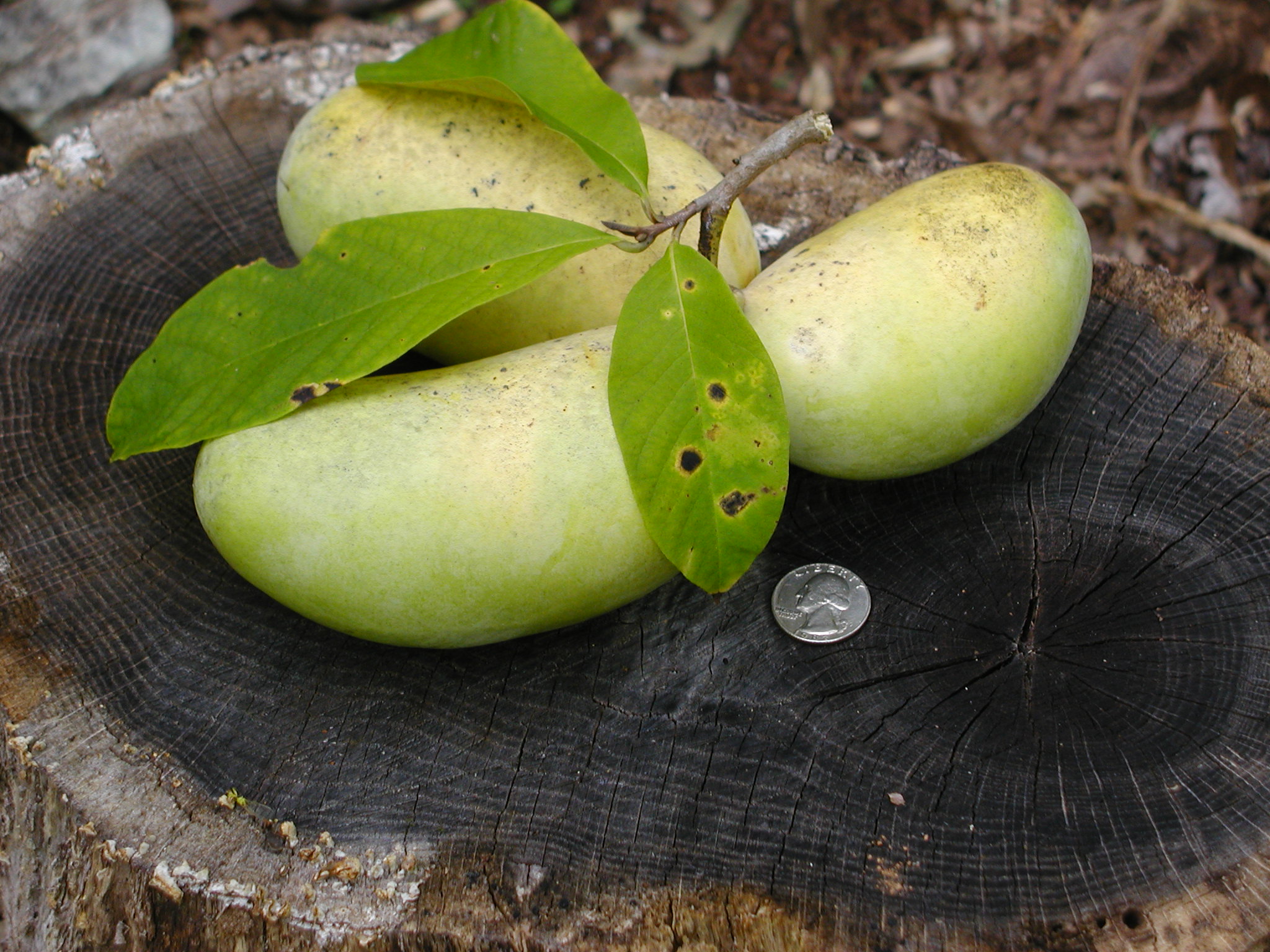NURSERY HOURS
Wednesday: 10-4 Thursday: 10-6 Friday-Saturday: 10-4 Sunday: 12-4
November 14, 2021
Prunus serotina
The Black cherry is an important southern tree for both wild life and commercially. Young black cherries tend to have a conical crown but when given enough room, the mature trees develop long limbs and arching branches giving it an oval shaped crown. The Black cherry’s fall foliage is a golden…
August 2, 2021
Aronia prunifolia
Aronia prunifolia or Purple Chokeberry is a natural hybrid between A. arbutifolia (Red Chokeberry), and A. melanocarpa (Black Chokeberry), a more mountainous species. All three Chokeberries have very diferent distribution maps. Purple Chokeberry is much less abundant than the Red Chokeberry. It is much like Red Chokeberry in habit, that is,…
April 29, 2019
Diervilla ‘Troja Black’
Mountain or Georgia Bush Honeysuckle is a selection of our native Bush Honeysuckle, a small shrub endemic to our southern Appalachians. This low, spreading shrub (3-4’h x 3-5’w) with an arching habit grows well in full sun to part shade at lower elevations like our Piedmont as well as in the…
April 29, 2019
Franklinia alatamaha
One reason the Ben Franklin tree is grown is because it is attractive: fragrant, 3-inch flowers with delicate white petals and thick, bushy golden stamens, and foliage that is handsome, with outstanding fall coloration (red, purple, orange). But mostly it is grown because it is rare and has a great story.…
April 29, 2019
Hamamelis virginiana
Common Witchhazel is a deciduous shrub 12-18′ tall, and sometimes taller, famous for producing its aromatic, crinkly yellow flowers as it drops its foliage in late October/early November. Seeds from the previous season are ready for dispersal at the same time, and are expelled with some force from their capsules. Witchhazel…
April 29, 2019
Hydrangea quercifolia
Oakleaf Hydrangea, the quintessential flowering shrub for the native garden, is a deciduous shrub native to our southeastern states with outstanding ornamental value. Its growth form is broad, rounded, with lower stems sweeping the ground; with beautiful exfoliating bark and bold, handsomely lobed, deep green leaves, holding aloft great pyramidal, fragrant…
April 29, 2019
Lonicera ‘John Clayton’
This plant is not currently for sale. This is an archive page preserved for informational use. John Clayton’ is a cultivar of Coral Honeysuckle’s forma sulphurea (yellow form). It has the same charming leaf forms as Coral Honeysuckle and lovely warm yellow 2-inch trumpet-shaped flowers. It blooms in late spring,…
February 28, 2019
Vaccinium corymbosum
The beloved Highbush Blueberry is a deciduous shrub native to much of Eastern North America, with outstanding landscape value over three seasons. It’s clusters of dainty, hanging, bell-shaped, white-pink flowers are lovely in spring, followed by tasty blue berries that ripen in summer. These are valued by humans, birds, and smaller…
February 28, 2019
Viburnum nudum
Possumhaw Viburnum is a 12-15-foot tall (some report up to 20 feet) x 12-15-foot wide, deciduous, wet-tolerant shrub of surprising ornamental value found in Eastern states from Texas north to Canada. It ioccurs in all three NC zones, mountains, piedmont and coastal plain, though in the mountains the quite similar Viburnum…
February 28, 2019
Viburnum opulus
This plant is not currently for sale. This is an archive page preserved for informational use. Cranberrybush Viburnum or Highbush Cranberry is a dense, arching, deciduous shrub six to ten feet (or even taller) native all across Canada and our northern states down as far as a couple of counties…
February 28, 2019
Viburnum prunifolium
Smooth Blackhaw, native to much of mid-latitude Eastern and central U.S., is a large deciduous shrub or small tree which usually grows to around 15 feet tall and wide, but if grown as a single-stemmed tree form, it can reach up to 30 feet. It thrives in full sun to part…
February 28, 2019
Viburnum rafinesqueanum
This Viburnum — with its showy, flat-topped or domed white flowers and opposite, toothed leaves typical of Viburnums — stands out from its cousins because in addition to being handsome, it is a well behaved, small (6-foot) shrub that plays well with others. Two of them have volunteered on our property…
February 28, 2019
Viburnum rufidulum
Rusty Blackhaw is one of our Southern woodland viburnums whose range is central and southeastern U.S. In NC it occurs mostly in piedmont and coastal plain counties. It is a deciduous, dense, showy, highly arching understory shrub or small tree. Mature height is about 18′, but can be taller if grown…
February 28, 2019
Xanthorhiza simplicissima
Xantho (yellow) rhiza (root) simplicissima (most simple, as the stems are unbranched) — what a wonderful name!! — is a very interesting, deciduous, rhizomatous subshrub native to shady, damp depressions and stream banks in wooded habitats throughout the mountains and piedmonts of our Southeastern states. It has lacy foliage to a…
February 28, 2019
Taxodium distichum
Bald Cypress is a stately and long-lived deciduous conifer found throughout the swamps and riparian areas of the southeast, famous for its knobby “knees” and flared or buttressed trunks. It is important for most of us non-swamp dwellers, though, because Bald Cypress can also thrive in well drained upland soils. Since…
February 28, 2019
Vaccinium arboreum
This plant is not currently for sale. This is an archive page preserved for informational use. Sparkleberry or (Farkleberry) is an attractive, tough, underused woodland shrub usually eight to ten feet in height, though occasuinally it takes on a tree form. It is found in dry woods and open forests from…
February 28, 2019
Itea virginica
Iteaceae is a family of only one genus of trees and shrubs, and of the 27 species in that genus, Itea is the only one found in the U.S. (the vast majority of the others being from east Asia). Virginia Sweetspire, as often known as Itea, is a versatile and lovely…
February 28, 2019
Taxodium ascendens
Pond Cypress is a deciduous conifer of our Southeastern states which roughly resembles (and is considered by some to be a variety of) Taxodium distichum, or Bald Cypress (See our entry for T. distichum). There are similarities between the two, such as their amazing soil moisture adaptability from standing water to…
September 17, 2018
Rhododendron viscosum
Swamp Azalea is a shrub up to 8 ft tall at maturity with an upright, loosely branched, multi-stemmed habit and a tantalizing, musky floral scent in late spring. Clusters of very fragrant bright white (often with pink accents), trumpet-shaped flowers with five petals, slender tubes and elegant, exserted stamens appear in…
September 17, 2018
Rhus aromatica ‘Gro-low’
Rhus aromatica, or Fragrant Sumac, is a deciduous, thicket-forming shrub found in dry, open woods in most states of eastern U.S. (In NC, it is found mostly in piedmont counties.) Fragrant Sumac has a variable, sprawling, irregular form. It is reported by some to grow as tall as 12 feet in…
September 17, 2018
Nyssa sylvatica
This plant is not currently for sale. This is an archive page preserved for informational use. Blackgum is a stately, medium-sized hardwood tree extremely desirable for its spectacular scarlet fall foliage and its wildlife appeal. It is adapted to a very wide range of habitats from standing water to dry…
September 17, 2018
Osmundastrum cinnamomeum
Cinnamon Fern is an ancient, widespread and handsome fern native to North and South America as well as to Asia. It is found in swamps and moist woodlands as well as in upland gardens, in acidic soils from wet to moist/well drained. The fiddleheads of the fertile fronds, covered with cinnamon-colored…
September 17, 2018
Oxydendrum arboreum
Sourwood is a small to medium (30-70’) deciduous, understory tree found throughout the Carolinas in mixed hardwood forests It is the only member of its genus (Oxydendrum) and has no known subspecies, varieties or forms. It is in the Ericaceae family, and its closest relatives are in the genera Pieris and…
September 17, 2018
Lindera benzoin
Spicebush is a shrubby tree — five to ten feet-tall (and often wider than tall) — which has a great many attributes, beginning with its wonderfully spicy-citrusy aromatic foliage. The blooming period for Spicebush occurs during the mid-spring and lasts about 2 weeks. The males (yes, it is dioecious) have showier,…
September 17, 2018
Liriodendron tulipifera
This plant is not currently for sale. This is an archive page preserved for informational use. Tulip Poplar is a superbly shaped deciduous canopy tree, one of the tallest of the eastern hardwoods. Individuals have reached 190 feet in height, but the average Tulip Poplar is only on the order…
September 17, 2018
Fagus grandifolia
American Beech is one of the most beloved trees of Eastern North America, a late-successional tree reported in many counties of NC from the mountains to the coast. It is a medium to large tree, growing usually to 80 feet (but observed also at 100 feet tall or more), and can…
September 17, 2018
Fothergilla gardenii
Dwarf Fothergilla is a marvelous, slow-growing, deciduous shrub typically about three feet tall at maturity. In nature it is found in bogs (pocosins) and moist lowlands and savannahs in coastal areas of the Southeast from North Carolina to the Florida panhandle and Alabama. The soft, white bottle brush inflorescences are strongly…
September 17, 2018
Clethra ‘Sixteen Candles’
Sixteen Candles’ Clethra is a more compact cultivar of Clethra alnifolia, a wet-tolerant and beautiful coastal shrub all along the eastern seaboard and southern coastal states. Like the species, ‘Sixteen Candles’ is long-blooming, having sweet-fragrant flowers in the heat of the summer against a rich, medium-to-dark green foliage. But the plant…
September 17, 2018
Cyrilla racemiflora
Swamp Titi is an extremely interesting and underused shrub or small tree for our area. It grows to perhaps 20 feet (more often 12-15 feet) and can be described as having both lustrous evergreen or tardily deciduous leaves and colorful fall foliage! Its trunk(s) and branches are very nicely contorted, with…
September 17, 2018
Diospyros virginiana
Eastern persimmon is a lovely small- to medium-sized tree (up to sixty feet tall x thirty feet in spread) with lustrous foliage, dark green in summer and rich golden in fall, and beautiful bark. A member of the Ebony family, it is prized for its high quality, hard heartwood (used to…
September 17, 2018
Eubotrys racemosus
Sweetbells Leucothoe is a handsome, deciduous, colony-forming, understory shrub which is naturally found in the Coastal Plain and Piedmont swamps, bogs and wetlands of Southeastern states. It can be cultivated easily in upland sites as well, reaching up to ten feet tall in consistently moist and shady locations. Arching, mostly unbranched…
September 17, 2018
Euonymus americanus
Strawberrybush, or Hearts-a-Bustin’, is a unique, rhizomatous shrub with an unusual form that occurs in shady woodlands throughout the Southeast to Eastern Texas. Plants are 4-6 feet tall and multi-stemmed. The individual shoots are pencil-like and green with little branching. Leaves are long (~2 inches), opposite, and lance-shaped, colorful in fall.…
September 17, 2018
Clethra alnifolia
Sweet Pepperbush is a beautiful, multi-stemmed woody shrub native to our East coast from Nova Scotia and Maine down to Florida and over to Texas. In NC it is found in swamps and moist woods on the coastal plain and outer piedmont. Clethra is rhizomatous by nature, and if allowed, can…
September 17, 2018
Clethra ‘Ruby Spice’
‘Ruby Spice’ is a cultivar of one of our most beautiful native shrubs, Clethra alnifolia or Sweet Pepperbush. They are deciduous shrubs of medium stature with rich, dark green foliage, and flowers with head-turning, sensuous, honey-sweet scent in mid- to late-summer when few other shrubs are flowering. The flowers of ‘Ruby…
September 17, 2018
Carpinus caroliniana
Ironwood is a small to medium-sized (twenty to thirty-five feet) deciduous, understory tree that grows in woods throughout Eastern North America. It has handsome, smooth-textured, rippling bark (“Musclewood”) and alternate, doubly-serrated, oval leaves with a corrugated texture. The timber of Ironwood is of greater-than-average hardness and durability as suggested by its…
September 17, 2018
Carya glabra
This plant is not currently for sale. This is an archive page preserved for informational use. The Pignut Hickory is one of the tallest (eighty to one hundred-foot range) hickory trees comprising the Oak-Hickory Forests of Eastern North America. The trunk is generally straight and the crown of the tree slender,…
September 17, 2018
Carya ovata
This plant is not currently for sale. This is an archive page preserved for informational use. The Shagbark Hickory is a stately deciduous tree important in the Oak-Hickory Forests of Eastern North America. It is easily recognizable due to its bark, which peels off in large, loose strips. It commonly has…
September 17, 2018
Carya tomentosa
This plant is not currently for sale. This is an archive page preserved for informational use. Mockernut Hickory is the most abundant of the Hickories in its range in the Eastern U.S., and one of the most long-lived, reaching up to 500 years of age. This is a fifty- to…
September 17, 2018
Castanea pumila
Allegheny Chinquapin is a colonial, multi-stemmed shrub or small tree usually around 15 feet tall, taller if grown with single stem or cultivated with little competition. It is native to dry woods and ridges in the Southeastern states, and grows well where summers are hot. It is considered undervalued as a…
September 17, 2018
Cladrastis kentukea
In North Carolina, Yellowwood is found only in a few of our western-most counties bordering Tennessee, and is among the rarest of our native trees. It is thirty to fifty feet high and nearly that wide at maturity and is prized as an ornamental for its form, for its smooth, Beech-like…
September 17, 2018
Acer leucoderme
Chalk Maple is a small, deciduous tree native in the Southeast from NC to Texas. In NC, it occurs in slightly acid to circum-neutral rocky soils, in full sun, part shade and full shade, on riverbanks and ravines in the Piedmont counties. Chalk Maple is desirable because it has all the…
September 17, 2018
Aesculus parviflora
Although not actually native to NC (it naturally occurs in mid-Alabama), Bottlebrush Buckeye is a favorite shrub in our area because of its show-stopping, 8-12-inch tall panicles of white, feathery flowers with prominent reddish anthers and pinkish filaments. These attract numerous butterflies and other pollinators in early summer and then are…
September 17, 2018
Amelanchier canadensis
The Shadblow Serviceberry is a large shrub in the Rose family native to moist woods in the Eastern seabord of the U.S. and up into Canada. In NC it is found in counties of the lower Piedmont and Coastal plain. Serviceberry is beloved by native plant lovers for its many fine…
September 17, 2018
Amsonia hubrichtii
Native to the Ouachita Mountains of Oklahoma and Arkansas, Bluestar is an upright, broad-spreading herbaceous perennial ~3′ tall and wide, with clusters of terminal sky-blue flowers in spring. The leaves are very fine when compared to other members of the genus, creating a cloudlike texture. When grown in the sun, the…
September 17, 2018
Aronia arbutifolia
Red Chokeberry is a charming, multi-stemmed, deciduous woody shrub native to Atlantic and Southeastern states. It is found in swamps and wet places, and is therefore very useful for wet areas, but is happy in upland gardens as well and established plants even tolerate drought. This shrub is hard to beat…
September 17, 2018
Asimina triloba
The Pawpaw is a fun little tree (25-35 feet) to cultivate. In a favorable place, it will send out rhizomes and colonize. In spring there are lovely, dark red flowers emerging just as the leaves begin to unfurl. If there is another genetically distinct individual nearby, these flowers will give rise…
About the author

Proin volutpat vitae libero at tincidunt. Maecenas sapien lectus, vehicula vel euismod sed
Categories
Popular Posts
Instagram
Follow us

